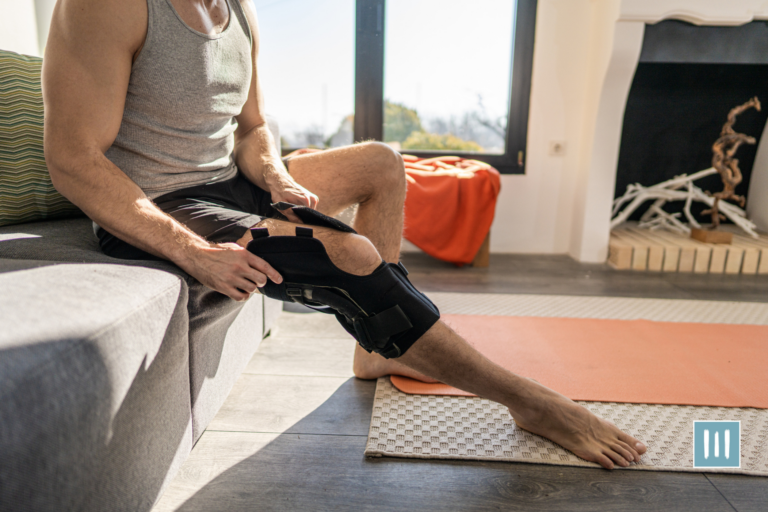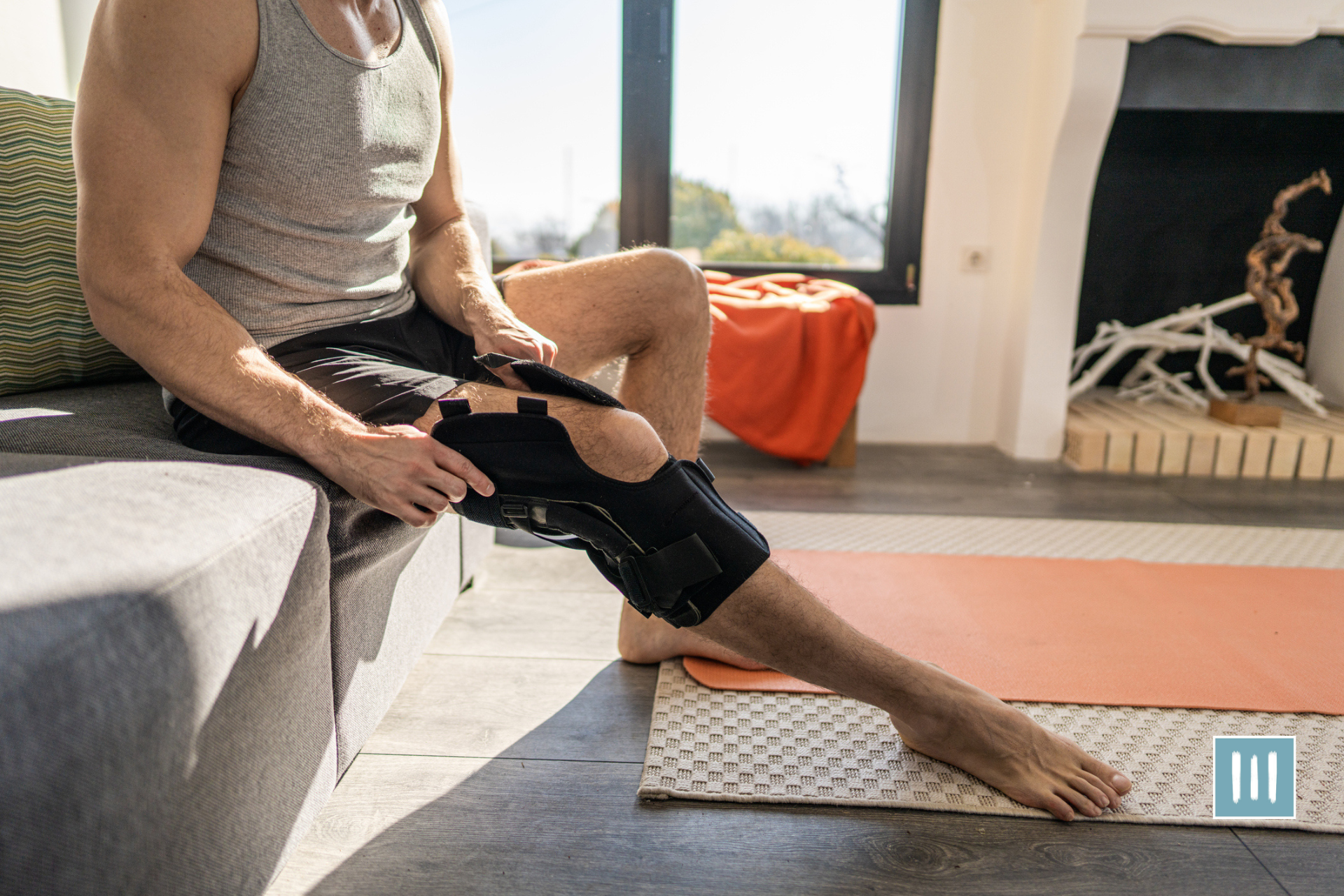Are you familiar with the saying, “no pain, no gain”? While this adage may hold some truth when it comes to pushing yourself during a workout, it’s essential to remember that your body also needs time to recover and heal.
Home workouts have become increasingly popular, offering convenience and flexibility, but they also come with their fair share of risks. If you’ve found yourself nursing an injury from a home workout, fear not! In this article, we will explore tips and techniques to help you recover from home workout injuries and get back on track to achieving your fitness goals.
In the pursuit of mastery over our bodies, it’s not uncommon to push ourselves to the limit during home workouts. Ignoring the signs of injury and pushing through the pain can lead to further damage and delay your progress.
The key to healing from home workout injuries is to give your body the time and care it needs to recuperate. In this article, we will delve into rehabilitation exercises and techniques that can aid in your recovery process, as well as explore the importance of proper form and technique to prevent future injuries. Additionally, we will discuss when it may be necessary to seek professional help from a healthcare provider.
So, let’s dive in and discover how you can bounce back stronger and smarter after a home workout injury.
Understanding Common Home Workout Injuries
Now that we’ve covered the importance of home workouts, let’s dive into the world of common home workout injuries and how to prevent them.
When it comes to working out at home, it’s important to be aware of the potential risks and injuries that can occur. One common injury that many people experience is muscle strains. This can happen when you push yourself too hard or use improper form while lifting weights or doing exercises that involve repetitive motions.
Another common injury is joint pain, which can be caused by overuse or improper technique. It’s important to listen to your body and not push yourself beyond your limits.
To prevent these common injuries, it’s crucial to warm up properly before each workout session. This can help to increase blood flow to your muscles, making them more flexible and less prone to strains.
Additionally, it’s important to use proper form and technique when performing exercises. This means using the correct posture, engaging the right muscles, and avoiding any sudden movements or jerking motions. If you’re unsure about the proper form for a specific exercise, it’s always a good idea to consult a professional trainer or watch instructional videos.
Lastly, don’t forget to give your body time to rest and recover. Overtraining can lead to fatigue and increased risk of injury, so be sure to schedule regular rest days and listen to your body’s signals.
By taking these preventative measures, you can minimize the risk of common home workout injuries and ensure a safe and effective fitness routine.
Rest and Recovery: The Key to Healing
Take a moment to prioritize rest and recovery – it’s crucial for healing your body and getting back on track. When you push yourself too hard during home workouts, injuries can happen. But don’t worry, with the right amount of rest and recovery, you’ll be back in action in no time.
Resting allows your body to repair damaged tissues and reduce inflammation. It’s important to listen to your body and give yourself the time you need to heal. This may mean taking a break from your usual workout routine and focusing on gentle stretching or low-impact exercises instead.
In addition to rest, recovery techniques can also help speed up the healing process. One effective technique is icing the injured area. Applying an ice pack to the affected area for 15-20 minutes several times a day can help reduce swelling and pain. Another technique is using compression, such as a compression sleeve or bandage, to support the injured area and reduce inflammation. Elevating the injured body part above heart level can also help reduce swelling.
Lastly, don’t forget about the importance of nutrition and hydration. Fueling your body with nutrient-rich foods and staying hydrated through Minimal Vacuum Insulated Sports Bottle can aid in the healing process.
Rehabilitation Exercises and Techniques
Imagine yourself as a resilient tree, swaying in the wind, as you engage in rehabilitation exercises to heal and strengthen your body. Just like a tree, your body can adapt and grow stronger, even after experiencing a setback. By incorporating rehabilitation exercises into your routine, you can speed up your recovery process and regain your strength and mobility.
Here are some techniques and exercises that will help you on your journey to recovery:
- Stretching: Start your rehabilitation exercises with gentle stretching to warm up your muscles and increase flexibility. Focus on the areas that were injured, but also incorporate stretches for the surrounding muscles to maintain balance and prevent further injuries.
- Strengthening Exercises: As you progress in your recovery, gradually introduce strengthening exercises to rebuild the muscles that were affected. Start with low resistance and gradually increase the intensity as your body gets stronger. This will not only help in healing the injured area but also prevent future injuries.
- Balance and Stability Training: Many injuries occur due to a lack of balance and stability. Incorporate balance exercises into your routine, such as standing on one leg or using a balance board, to improve your stability and reduce the risk of future injuries.
- Functional Movements: Focus on exercises that mimic the movements you perform in your daily activities or sports. This will help you regain your functional abilities and increase your confidence in returning to your regular activities.
Celebrate small victories along the way and trust in your body’s ability to heal and become stronger. Keep pushing yourself, but always listen to your body and adjust the intensity of your exercises accordingly. You have the power to recover and come back stronger than ever before.
Preventing Future Injuries: Proper Form and Technique
To prevent future injuries, make sure you’re using proper form and technique while exercising at home. Proper form and technique are essential for maximizing the effectiveness of your workouts and minimizing the risk of injury. When performing exercises, pay attention to your body alignment, muscle engagement, and breathing. Here are some tips and techniques to help you maintain proper form and technique:
| Tip | Technique |
|---|---|
| 1. Maintain proper alignment | – Keep your spine neutral and avoid rounding or arching your back.- Align your knees over your toes and avoid letting them collapse inward or outward.- Keep your shoulders down and relaxed, avoiding hunching or shrugging. |
| 2. Engage the correct muscles | – Focus on activating the target muscles for each exercise.- Avoid relying too much on momentum or compensating with other muscles.- Engage your core muscles to stabilize your body during movements. |
| 3. Control your movements | – Perform exercises with slow and controlled movements.- Avoid jerky or sudden movements that can strain your muscles or joints.- Maintain a steady pace and avoid rushing through exercises. |
| 4. Listen to your body | – Pay attention to any pain or discomfort during exercises.- If something feels off or causes pain, modify the exercise or seek guidance from a professional.- Take rest days and allow your body to recover when needed. |
| 5. Seek guidance and supervision | – If you’re new to exercising or trying new exercises, consider seeking guidance from a certified trainer or instructor.- They can provide proper instruction and ensure you’re performing exercises correctly.- If you’re unsure about your form, consider recording yourself to identify areas for improvement. |
By following these tips and techniques, you’ll be able to exercise safely and effectively at home. Stay consistent, listen to your body, and enjoy the process of becoming stronger and more resilient.
Seeking Professional Help: When to Consult a Healthcare Provider
If you’re unsure about the severity of your injury, it’s important to consult a healthcare provider to ensure proper treatment and avoid any potential complications. While some injuries can be treated at home with rest and self-care, there are certain situations where seeking professional help is necessary.
Here are four signs that indicate it’s time to consult a healthcare provider:
- Persistent or worsening pain: If the pain from your injury persists or becomes worse over time, it’s a red flag that something may be wrong. Ignoring the pain or trying to push through it can lead to further damage and delayed healing. A healthcare provider can assess the severity of the injury and recommend appropriate treatment options.
- Swelling and inflammation: Swelling and inflammation are common symptoms of injuries, but if they persist for an extended period or are accompanied by other concerning symptoms, it’s important to consult a healthcare provider. They can determine the underlying cause of the swelling and guide how to reduce it effectively.
- Restricted range of motion: If your injury is causing limitations in your ability to move or perform daily activities, it’s a sign that you may need professional intervention. A healthcare provider can evaluate your range of motion and develop a treatment plan to help restore mobility and function.
- Numbness or tingling: If you’re experiencing numbness or tingling sensations in the injured area or surrounding areas, it could be a sign of nerve damage. Nerve injuries require prompt medical attention to prevent long-term complications.
If you’re unsure about the severity or proper treatment of your injury, don’t hesitate to seek professional help. Consulting a healthcare provider will ensure that you receive the appropriate care and support needed for a successful recovery. Keep striving for mastery in your fitness journey, and don’t let injuries hold you back.
Frequently Asked Questions
How long does it typically take to recover from a home workout injury?
Typically, it takes a few weeks to a couple of months to recover from a home workout injury. But don’t forget, everyone’s healing process is different. Be patient, follow your doctor’s advice, and focus on gradual progress to ensure a successful recovery.
Are there any specific exercises or techniques that can help speed up the recovery process?
To speed up your recovery process, try incorporating gentle stretching exercises like Cat-Cow and Child’s Pose. These techniques target tight muscles and improve flexibility, fostering faster healing and a feeling of fulfillment.
Can I still continue exercising while recovering from a home workout injury?
Yes, you can still exercise while recovering from a home workout injury, but it’s important to listen to your body and modify your routine. Focus on low-impact exercises and avoid aggravating the injured area.
Are there any dietary or nutritional recommendations that can aid in the healing process?
To aid in the healing process, it’s crucial to focus on a balanced diet rich in nutrients. Ensure you’re getting enough protein, vitamins, and minerals to support tissue repair and reduce inflammation. Hydration is also key for optimal recovery.
What are some signs or symptoms that indicate a home workout injury may be more serious and require immediate medical attention?
If you’re wondering when to seek medical help for a home workout injury, watch out for severe pain that persists, inability to move a body part, numbness or tingling, visible deformity, or difficulty breathing. Don’t hesitate to seek immediate medical attention.

















